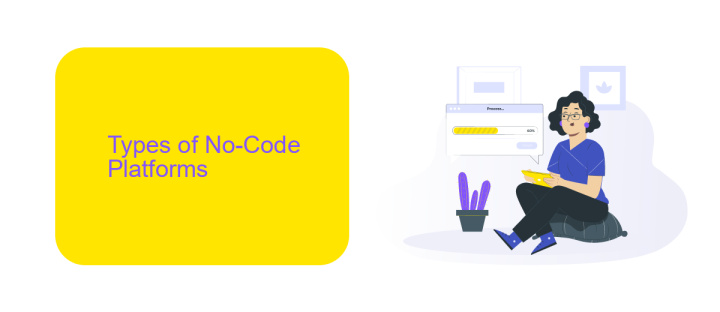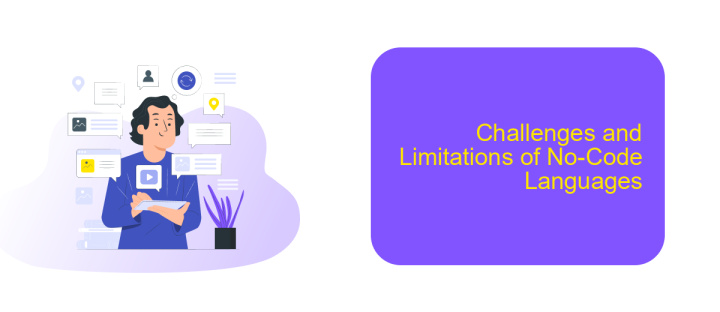No-Code Language
The rise of no-code platforms is revolutionizing the way we approach software development. By empowering individuals without traditional programming skills to create functional applications, these tools are democratizing technology and fostering innovation. This article explores the key features, benefits, and potential limitations of no-code languages, shedding light on their growing impact across various industries.
Introduction to No-Code Languages
No-code languages are revolutionizing the way we approach software development by enabling individuals with little to no programming experience to create applications and automate processes. These platforms use visual interfaces and drag-and-drop functionalities, making it easier for users to build complex solutions without writing a single line of code.
- Ease of Use: Intuitive interfaces that simplify the development process.
- Cost-Effective: Reduces the need for hiring specialized developers.
- Faster Time to Market: Accelerates the development cycle.
- Flexibility: Allows for quick adjustments and updates.
One of the key advantages of no-code platforms is their ability to integrate various services seamlessly. Tools like ApiX-Drive facilitate these integrations by providing a user-friendly interface to connect different applications and automate workflows. This significantly enhances productivity and ensures that businesses can adapt quickly to changing needs.
Types of No-Code Platforms

No-code platforms come in various types, each catering to different needs and use cases. Website builders like Wix and Squarespace allow users to create professional-looking websites without writing a single line of code. These platforms offer drag-and-drop interfaces, customizable templates, and a plethora of design options, making it easy for anyone to build and maintain a website. Similarly, mobile app builders such as Adalo and Glide enable users to develop mobile applications quickly, leveraging pre-built components and intuitive design tools.
Another significant category is automation and integration platforms, which streamline workflows by connecting different services and applications. ApiX-Drive, for instance, allows users to set up integrations between various business tools without coding. This platform simplifies the process of automating tasks, such as syncing data between CRM systems and email marketing software, thereby enhancing productivity. Additionally, database and backend service platforms like Airtable and Bubble empower users to create complex data-driven applications, offering robust functionalities and scalability without the need for programming expertise.
Benefits of Using No-Code Languages

No-code languages offer a variety of benefits for businesses and individuals looking to streamline their development processes. These platforms are designed to be user-friendly, allowing those without traditional coding skills to create applications and automate workflows efficiently.
- Accessibility: No-code languages make technology accessible to a broader audience, enabling non-technical users to build and manage their own applications.
- Speed: Development time is significantly reduced, as users can quickly prototype and deploy applications without waiting for coding experts.
- Cost-Effective: By eliminating the need for a large development team, businesses can save on labor costs and invest resources elsewhere.
- Integration: Tools like ApiX-Drive facilitate seamless integration with various services, allowing users to automate processes and improve operational efficiency.
- Flexibility: No-code platforms offer a range of customizable templates and features, giving users the flexibility to tailor applications to their specific needs.
Overall, the adoption of no-code languages empowers users to innovate and solve problems independently, fostering a culture of creativity and efficiency. Whether for small businesses or large enterprises, these tools provide a powerful means to enhance productivity and drive digital transformation.
Challenges and Limitations of No-Code Languages

No-code languages have revolutionized the way we approach software development, making it accessible to a broader audience. However, they come with their own set of challenges and limitations. One significant issue is the lack of flexibility and customization options compared to traditional coding methods. This can be particularly problematic for complex projects that require unique functionalities.
Another challenge is scalability. No-code platforms may struggle to handle large-scale applications or significant data loads efficiently. Additionally, these platforms often have limitations in terms of performance optimization and may not be suitable for high-performance requirements.
- Limited customization and flexibility
- Scalability issues for large projects
- Performance optimization limitations
- Dependency on platform-specific features
Integrating no-code solutions with existing systems can also be challenging. While services like ApiX-Drive offer tools to facilitate integrations, they may not cover all possible use cases or provide the depth of integration needed for more complex systems. Hence, while no-code languages offer significant advantages, they are not a one-size-fits-all solution and may require careful consideration of their limitations.
Future of No-Code Development
The future of no-code development looks incredibly promising as it continues to democratize software creation, allowing non-technical users to build sophisticated applications. With advancements in AI and machine learning, no-code platforms are becoming more intuitive and powerful, enabling even complex workflows and integrations. This shift not only accelerates development cycles but also encourages innovation by removing traditional barriers to entry.
One significant aspect of this evolution is the seamless integration of various services. Tools like ApiX-Drive are pivotal in this regard, offering automated data synchronization between different applications without requiring coding skills. As no-code platforms continue to evolve, we can expect even more robust integration capabilities, allowing businesses to streamline operations and enhance productivity effortlessly. The future of no-code is set to empower a broader audience, fostering a new era of digital transformation.
FAQ
What is a No-Code Language?
Who can benefit from using No-Code Languages?
How do No-Code platforms handle integrations with other software?
What types of applications can be built using No-Code Languages?
Are No-Code Languages scalable for business growth?
Apix-Drive is a universal tool that will quickly streamline any workflow, freeing you from routine and possible financial losses. Try ApiX-Drive in action and see how useful it is for you personally. In the meantime, when you are setting up connections between systems, think about where you are investing your free time, because now you will have much more of it.

